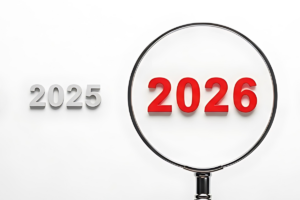State legislators around the country continue to introduce bills to force health plans to count drug coupon value provided by pharmaceutical companies towards patient out-of-pocket cost requirements. Bills in some states have already passed. I appreciate and respect legislators who have sponsored this legislation; we share the common goal of reducing prescription drug costs. However, legislation promoting the use of prescription drug coupons will have the opposite effect.
Like patients, employers around the country are looking for solutions to manage the escalating cost of providing healthcare benefits to employees. Employers are navigating new drug approvals (several now more than $1 million for an annual course of treatment), an abundance of fraud, waste, and abuse, especially in the pharmaceutical marketplace, and marketing games that promote the use of pharmaceuticals.
Although coupons can lower costs for patients, they can also promote waste. As an example, when a name-brand cereal offers a coupon, it intends to temporarily lower the cost of the name-brand cereal to hook consumers on its brand and keep them away from competitors. When the coupon expires and the cost goes back up, consumers are more likely to pay the higher price to stick with the brand they have become attached to.
Prescription drug coupons work in a similar way. Manufacturers offer coupons to hook patients on high-cost drugs. The patient’s employer covers the remaining cost, leading to higher health insurance premiums for everyone.
While employers could ask for a ban on coupons, they simply request this coupon value can be excluded from counting towards deductible and out-of-pocket maximum calculations. As an issue of fairness to others covered under the plan, patients should not be able to use coupons from pharmaceutical manufacturers to cover their out-of-pocket responsibilities. A knee surgery patient does not have a coupon from a hospital to cover their out-of-pocket responsibility, nor does a parent with a child that has to go to the emergency room. Often, these patient cost shares are put in place to dissuade wasteful spend of valuable healthcare dollars and control the cost of coverage for all.
Here are the facts when it comes to manufacturer coupons:
- The prices for drugs with manufacturer coupons increase faster (12-13% per year) compared to non-couponed drugs (7-8% per year).¹
- If Medicare’s ban on coupons were not enforced, costs to the program would increase by $48 billion over the next ten years.²
- Coupons were responsible for a $32 billion increase in spending on prescription drugs for commercial plans.³
- For every $1 million in manufacturer coupons for brand drugs, manufacturers reap more than $20 million in profits (20:1 return).4
The simplest, most effective way to reduce patient costs for healthcare is for manufacturers to drop the price of the drugs.
Employers are getting involved, contributing to the defeat of some bills around the country. Please reach out to the National CooperativeRx team, if you need talking points, help drafting a letter, or have questions about this important issue for employer-sponsored health plans.
- Leemore Dafny, Christopher Ody, and Matt Schmitt. October 2016. When Discounts Raise Costs: The Effect of Copay Coupons on Generic Utilization. The National Bureau of Economic Research. Retrieved April 25, 2023, from https://www.nber.org/papers/w22745
- Visante. May 2020. Drug Manufacturer Coupons Raise Costs in Medicare Part D, Hurting Vulnerable Beneficiaries. Retrieved April 25, 2023, from https://www.pcmanet.org/wp-content/uploads/2020/05/Visante_Manufacturer-Coupons-Raise-Costs-in-Part-D-.pdf
- Visante. November 2011. How Copay Coupons Could Raise Prescription Drug Costs By $32 Billion Over the Next Decade. Retrieved April 25, 2023, from https://www.pcmanet.org/wp-content/uploads/2016/08/pr-dated-07-14-12-visante-copay-coupon-study.pdf
- Dafny et al. October 2016




